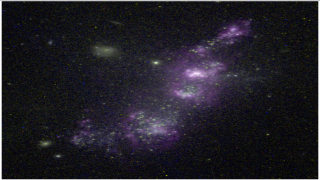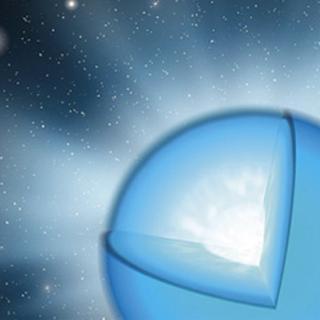Bibcode
Rodríguez Espinosa, J. M.; Mas-Hesse, J. M.; Salvador-Solé, E.; Calvi, R.; Manrique, A.; Chanchaiworawit, K.; Guzman, R.; Gallego, J.; Herrero, A.; Marín Franch, A.
Bibliographical reference
Monthly Notices of the Royal Astronomical Society
Advertised on:
3
2020
Citations
5
Refereed citations
5
Description
We show herein that a proto-cluster of Ly α emitting galaxies, spectroscopically confirmed at redshift 6.5, produces a remarkable number of ionizing continuum photons. We start from the Ly α fluxes measured in the spectra of the sources detected spectroscopically. From these fluxes, we derive the ionizing emissivity of continuum photons of the protocluster, which we compare with the ionizing emissivity required to reionize the protocluster volume. We find that the sources in the protocluster are capable of ionizing a large bubble, indeed larger than the volume occupied by the protocluster. For various calculations, we have used the model AMIGA, in particular to derive the emissivity of the Lyman continuum photons required to maintain the observed volume ionized. Besides, we have assumed the ionizing photons escape fraction given by AMIGA at this redshift.
Related projects

Starbursts in Galaxies GEFE
Starsbursts play a key role in the cosmic evolution of galaxies, and thus in the star formation (SF) history of the universe, the production of metals, and the feedback coupling galaxies with the cosmic web. Extreme SF conditions prevail early on during the formation of the first stars and galaxies, therefore, the starburst phenomenon constitutes a
Casiana
Muñoz Tuñón

Physical properties and evolution of Massive Stars
This project aims at the searching, observation and analysis of massive stars in nearby galaxies to provide a solid empirical ground to understand their physical properties as a function of those key parameters that gobern their evolution (i.e. mass, spin, metallicity, mass loss, and binary interaction). Massive stars are central objects to
Sergio
Simón Díaz